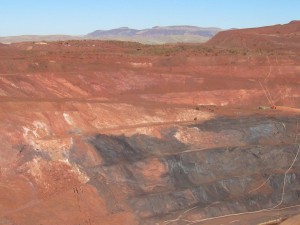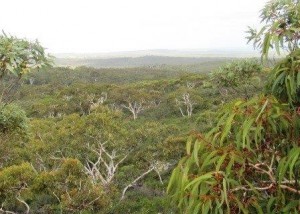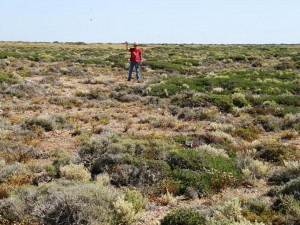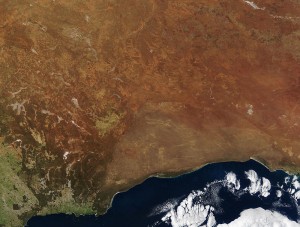
I so rarely go to Brisbane and this week I’m there four times, just when the whole city goes into lock-down for the outrageously expensive and disruptive G20 conference. It started last Sunday with our annual garden concert at Fairfield – our former neighbours have been hosting this event for 10 years (not counting 2011 when their back lawn was awash). We started setting up our small PA system, all the while being “buzzed” by helicopters, supposedly on manoeuvres, rehearsing their role for the coming week’s shenanigans.
Finally at 3pm we go up to start the concert and just as we did, a lone helicopter hovered overhead. What was he thinking?
“Ten four, HQ, we got ourselves a folkie gathering.”
“Roger that – have they go a permit?’
“It looks like a private house – and…they all seem, like, elderly.”
“OK BravoEcho, move on.”
We’ve had our share of G20 vehicles up here in the hinterland – black limos, white vans, all with G20 number plates. We imagine they are making half-day tourism forays into the hinterland − checking out the Glasshouse Mountains, browsing the cheese shop, tasting a few local wines, buying an investment property or two. The conspiracy theorists point to our well located comms (radio communication towers) on hilltops and move their internet security settings to high.
Ah well, it’s good to know the G20 folk feel OK about freely driving about in our town while authorities make it as difficult as possible for us to visit Brisbane at this time. Crikey, they don’t even have to pay to park.
We had tickets to the ballet in West End yesterday and were wondering (a) how to get there and (b) how to get home again until friends who live in Bardon offered us a bed for the night.
Then we got an email from Queensland Ballet, warning us to “Please plan your trip and allow extra time ahead of your journey.” We ended up taking the Go Between Bridge (one of two Brisbane bridges – the other is the Goodwill Bridge – named after ‘famous’ bands). That was too easy – we were half an hour early, but had to park three blocks away.
And then, this Monday morning, at what my musician friend Silas Palmer calls “stupid o’clock”, we will be driving to Brisbane so he can catch the 5am red-eye flight to Melbourne. We’re driving to Samford on Saturday night where Silas is playing at a G20 Women in Docs gig (it’s free). Then we’ll take him back with us and spend a day in the studio while he adds piano and fiddle to my new songs. Hopefully by then the 620 (sorry G20), road closures will have ended and Monday’s 2.30am drive will be easier than today’s three-hour drive to Maleny via Woodford. The freeway was a car park today and last night, on account of people doing what Mayor Graham Quirk urged them not to do (leaving town for a three-day weekend at the coast).
Tabling the G20 agenda
While the Federal government is spending some serious coin to stage this event, the businesses that are affected by detours, road closures and barricades receive no compensation.
Sydney Morning Herald political reporter Heath Aston was apparently shown some Federal Government G20 contracts that outlined some of the expenses incurred over the two-day meeting. There was a lot of talk about the meeting table, which was commissioned for the G20 finance ministers’ meeting in 2006 (at a cost of $70,000). The Abbott government has approved a further $36,000 to extend the table and another $68,000 for chairs.
More than $10 million is being shelled out to house the 20 delegates and their entourages at some of Brisbane’s leading hotels. Another $250,000 has been earmarked for taxis and rental cars and $150,000 for “tablet devices”. Oh, and did I mention $34 million for security?
Excuse me – I have a question. What happens to the table (which will apparently cost $150,000 to be moved around between lead-up meetings to its final destination at the Brisbane Exhibition and Convention Centre) once the G20 is over?
Considering it is highly unlikely the G20 will return to Brisbane in our lifetime, why not put the table and chairs up for auction? I would think some cashed up city council would love to brag about that. Or a high class restaurant could grab it for their VIP room. Or perhaps one of the country’s idle rich would like a showpiece dining table. They’d have to extend the dining room of course, but what else is money for?
Then again, the table (and other recyclable detritus from the G20), could be donated to a clever timber worker with instructions to build a small, affordable, sustainable house – a display home for poor people, if you like, located on a suburban allotment donated by a kind-hearted developer (they do exist). This house (I’m thinking three rooms, a kitchen, a bathroom and somewhere to chain the pushbike), should be rented at $50 a week to the person on the bottom of the public housing list. This, I think, would make several points about a few things.
I’ll admit we live in a sort of utopian bubble up here, gathering at our local watering hole on Fridays to harrumph about this and that. Mr Clean had a few pointed questions for the G20 organisers. Had they not ever heard of Skype? Were they deliberately trying to incite dissent by occupying a city for two days and denying its people freedom of movement? They could have taken over Hamilton Island for the weekend and repelled all boarders. All good points, Mr Clean.
One of my old business contacts observed that the main risk with the G20 is that they will listen too much to economists, who spend most of their time looking out the rear window, and over-stimulate world economies with money-printing and fiscal incentives.
He says most world economies have been recovering quite well over the past three to four years without their help.
He is expecting a stoush and will be disappointed if there isn’t one, adding that, whatever form it takes, he hopes that some degree of common sense prevails.
From the mouths of babes
That left me pondering what you’d say to a four-year-old, in that ‘why’ phase of life, if he asked why Brisbane was hosting the G20.
Kid: “Daddy, what’s a Geetwenty?”
Dad: “It’s a meeting of 20 finance ministers and central bankers who play a significant role in ensuring that international and domestic economic policies work together to protect the global economy against future shocks.”
Kid: “Yes but why?”
Dad: “They meet so they can restore business and investor confidence and address the causes of the global financial crisis and ensure financial stability.”
Kid: “A dress like what Mummy wears?”
Dad: “They also have to make important decisions about inflation.”
Kid: “What’s inflation?”
Dad: “Well, if Mummy buys a dozen free-range, organic eggs from the co-op and they cost $7 and next week they cost $9, that’s inflation.”
Kid: “Why don’t we get chooks, then?”



















